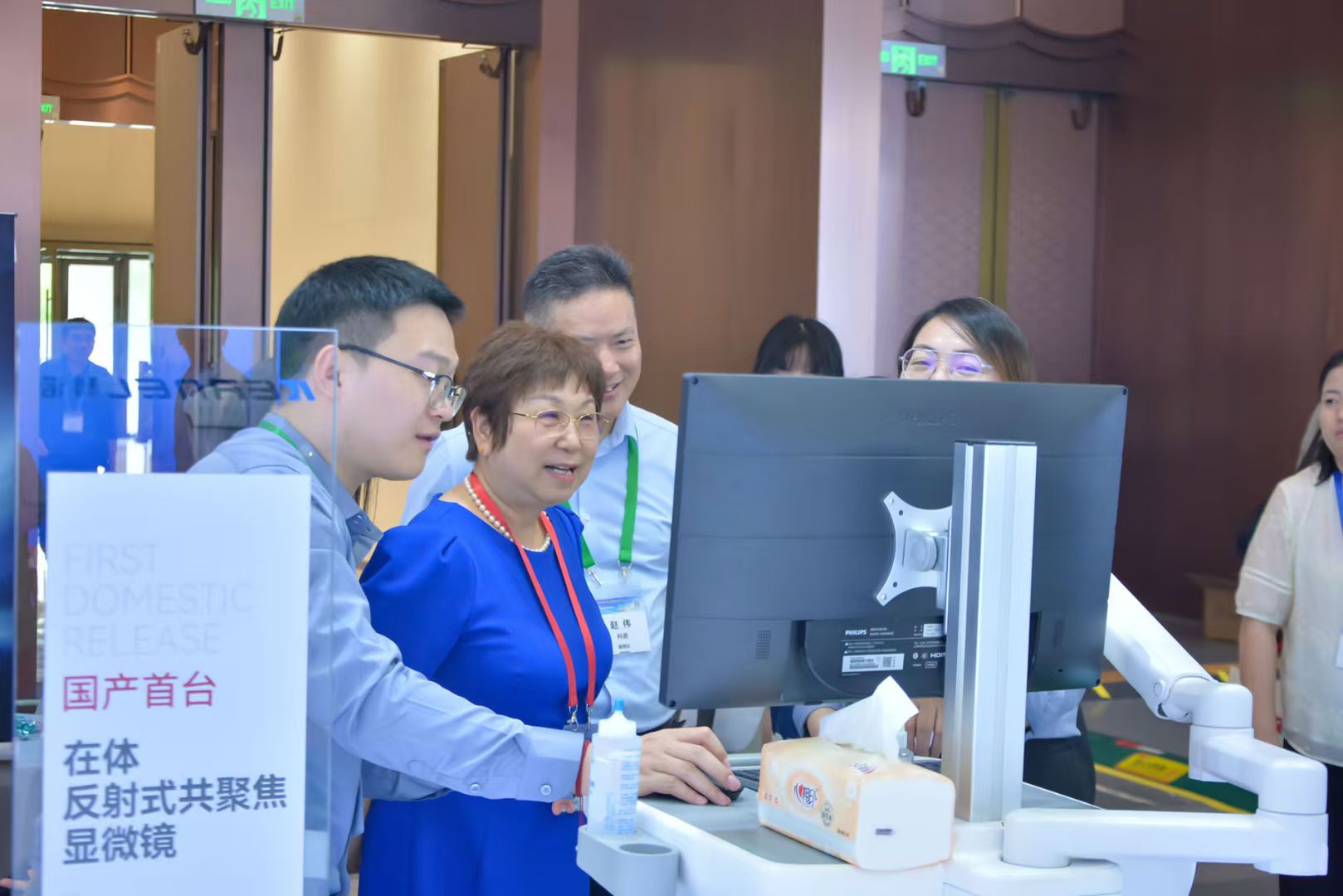
The RCM Revolution: Market Trends & Future for Reflectance Confocal Microscopy | KernelMed Insights
2025-10-15 17:36Reflectance Confocal Microscopy (RCM): From Niche Tool to Dermatologic Necessity
For those of us dedicated to noninvasive skin diagnostics, Reflectance Confocal Microscopy (RCM) represents a fundamental shift in patient care. What began as a sophisticated, niche tool has rapidly transformed into a cornerstone technology for skin imaging. Over the past five years, this acceleration has been fueled by a heightened global focus on early, non-surgical skin cancer detection, coupled with significant technological leaps that have brought the power of cellular resolution imaging right into the clinic.
Decoding the RCM Global Market Dynamics
Our market intelligence reveals the clear trajectory of this technology. Between 2020 and 2025, the global RCM market experienced robust expansion, achieving an estimated Compound Annual Growth Rate (CAGR) of 9.6%.
Geographically, the installation base shows a strong presence in established medical markets:
Europe currently holds the largest share, accounting for nearly 38% of installed systems.
North America closely follows, capturing 34% of the market.
The Asia-Pacific (APAC) region, however, is the engine of future growth at 21%. Its rapid adoption is primarily driven by the escalating incidence of nonmelanoma skin cancers, improving healthcare reimbursement policies, and a keen regional interest in advanced noninvasive diagnostic technologies.
RCM's Irreplaceable Clinical Value and Evidence-Based ROI
The true value of RCM lies in its ability to provide real-time, in vivo visualization of skin architecture at near-histological, cellular resolution. This capability has cemented its role in critical dermatologic applications:
Diagnosis and Mapping: Indispensable for the diagnosis of melanoma and basal cell carcinoma.
Treatment Monitoring: Allowing precise tracking of lesion response to non-surgical therapies.
Reduced Biopsies: Recent high-impact clinical studies (e.g., JAAD, 2023; PubMed ID 37489219) provide compelling evidence, showing that the integration of RCM reduced the rate of unnecessary biopsies by a significant 31–35% and boosted overall diagnostic sensitivity to 93% when combined with standard dermoscopy.

The Business Case: Cost-Effectiveness and Seamless Integration
Beyond clinical excellence, RCM offers a compelling economic argument. Data from leading European dermatology centers indicates that integrating RCM technology can reduce total patient management costs by 15–20%—a direct result of fewer unnecessary surgical excisions and optimized, targeted follow-up schedules.
For the private dermatology practice, the investment is proving worthwhile: the average Return on Investment (ROI) for RCM devices is now typically realized within 24–30 months, especially when these systems are leveraged within evolving teledermatology workflows, maximizing their utility and accessibility.
Key Technological Innovations Driving Accessibility (2020–2025)
The period between 2020 and 2025 has been pivotal for RCM innovation. Development has centered on three strategic pillars: enhancing image fidelity, creating more compact hardware, and integrating sophisticated analysis tools.
Crucially, the introduction of portable and handheld RCM models, such as those pioneered by KernelMed, has been a game-changer. These compact designs dismantle the barriers of fixed-system usage, enabling wider clinical accessibility and flexible deployment in both high-volume hospital departments and streamlined outpatient settings globally.

Future Outlook: The $350 Million Market by 2030
Looking ahead, market forecasts project that the global RCM sector will swell to approximately USD 350 million by 2030. This expansion will be fueled by several interconnected drivers:
Regulatory Support: Increased regulatory approvals in new markets.
Training Expansion: Broader clinical training and certification programs establishing RCM as standard practice.
AI Integration: The seamless integration with next-generation AI-based diagnostic platforms, which will make interpretation faster and more consistent.
The Asia-Pacific region is expected to lead this charge, projected to maintain the fastest CAGR of 11.2% over the coming half-decade.
Navigating Challenges and Industry Commitments
While RCM’s benefits are clear, adoption still faces the persistent hurdles of high initial device cost and the need for more comprehensive training. Furthermore, robust and consistent reimbursement frameworks are necessary to accelerate widespread clinical use.
The industry, however, is proactively closing these gaps. Strategic partnerships—such as those between device innovators like KernelMed and leading dermatology institutions—are focused on building educational curricula and developing modular, affordable system models to ensure this essential technology reaches every clinic that needs it.
Conclusion: RCM is the Future of Dermatologic Diagnostics
Reflectance Confocal Microscopy is unequivocally no longer an experimental technology—it has cemented its status as an essential diagnostic standard in modern dermatology. As the evidence base grows stronger and the technology becomes increasingly affordable and user-friendly, we fully anticipate RCM to be a non-negotiable component of skin cancer diagnosis and dermatologic research worldwide. KernelMed is proud to be at the forefront of this transformation, offering innovative, cost-effective RCM systems that empower clinics and distributors to deliver superior patient outcomes globally.

